Image


LEBANON, OH -- The fungi are an interesting life form for naturalists and scientists to study. Worldwide there are approximately 2.5 million of them. In Ohio there are over 2000 species. They are neither plants that manufacture their own food through photosynthesis nor are they animals that ingest their food. Rather they absorb their food by breaking down dead plant or animal matter with their thread-like root structure called the mycelium.
Fungi are decomposers. We can’t see the mycelia that are buried within the decomposing material. What we see is the fruiting or spore-producing reproductive part of the fungus.
The most obvious fungi are the mushrooms. These come in a variety of forms such as the common gilled cap atop a stem (think “toadstool”). There are others such as slime molds, scales, brackets, and puffballs. The various individual species appear at very specific times of their choosing. They are quite picky about temperature, humidity, moisture, and other conditions in their surroundings.
We can find fungi locally almost any time of the year. In the spring many people enjoy hunting for morels.
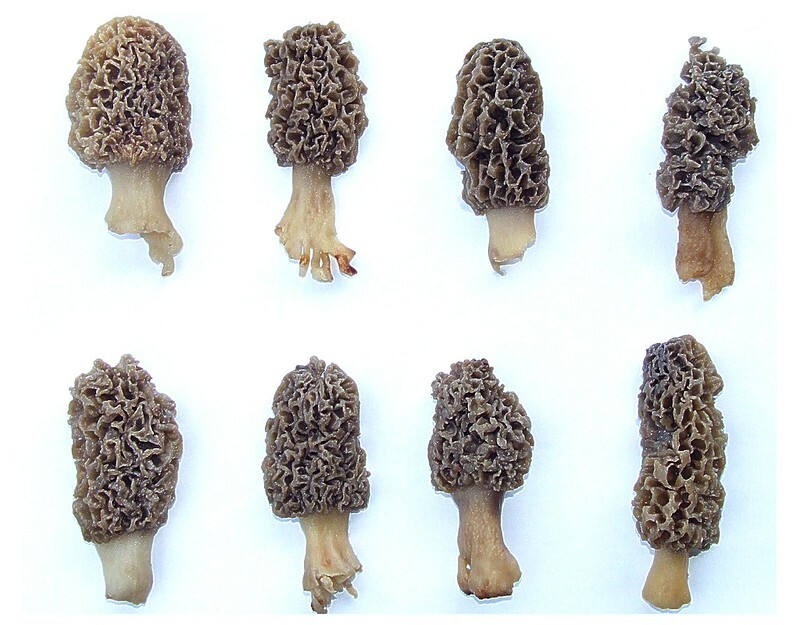 Morchella, the true morels, is a genus of edible sac fungi closely related to anatomically simpler cup fungi in the order Pezizales
Morchella, the true morels, is a genus of edible sac fungi closely related to anatomically simpler cup fungi in the order PezizalesThe morels are truffle-like edible delicacies highly sought-after by mushroom connoisseurs in April and May. They are sometimes harvested and sold for up to $75 a pound!
But some mushrooms are not good table fare due to their texture or taste. Others are toxic and can cause liver damage or even death if eaten.
Here in Warren County the past two summers have been excessively hot and drought-stricken for weeks on end. This resulted in quite a reduction in the number of mushroom species I normally would see when out hiking. However, now that we have moved into the cooler, wetter fall season I am beginning to see some of my old familiar favorites. Some are very attractive. Others are downright ugly. I’ll share several of the “pretty ones” here.
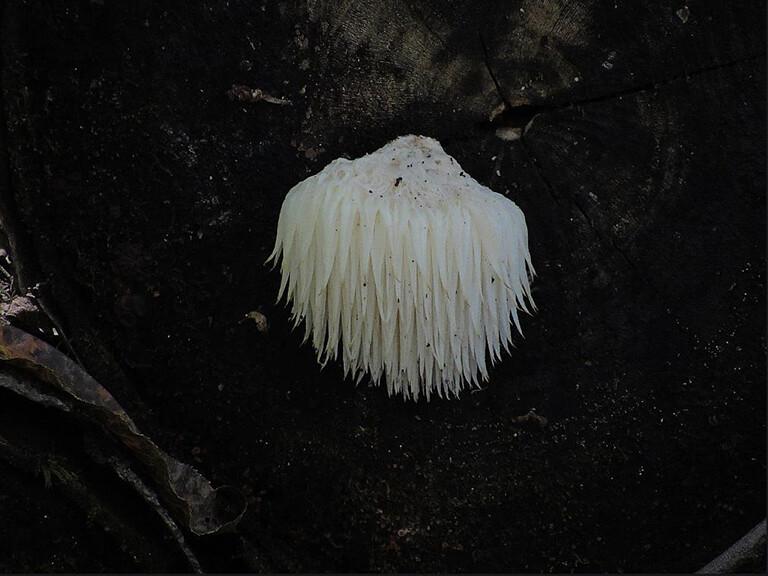 Hericium erinaceus, commonly known as lion's mane, yamabushitake, bearded tooth fungus, or bearded hedgehog, is a species of tooth fungus. It tends to grow in a single clump with dangling spines longer than 1 centimetre.
Hericium erinaceus, commonly known as lion's mane, yamabushitake, bearded tooth fungus, or bearded hedgehog, is a species of tooth fungus. It tends to grow in a single clump with dangling spines longer than 1 centimetre.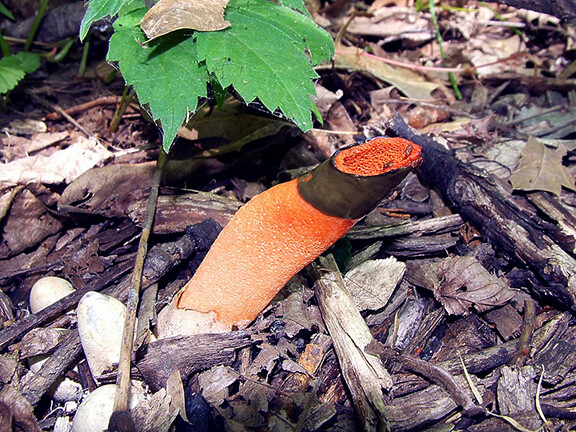 Mutinus elegans, commonly known as the elegant stinkhorn, the dog stinkhorn, the headless stinkhorn, or the devil's dipstick, is a species of fungus in the Phallaceae family.
Mutinus elegans, commonly known as the elegant stinkhorn, the dog stinkhorn, the headless stinkhorn, or the devil's dipstick, is a species of fungus in the Phallaceae family.
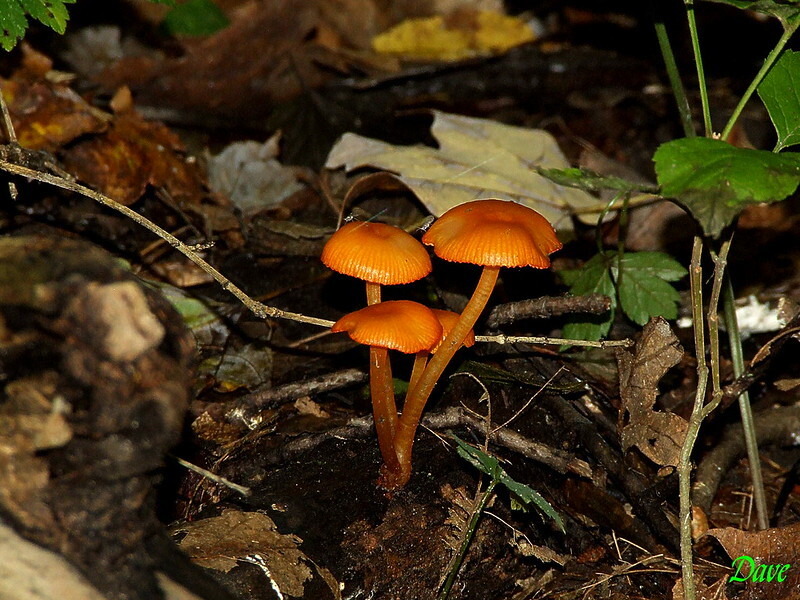 Mycena leaiana, commonly known as the orange mycena or Lea's mycena, is a species of saprobic fungi in the genus Mycena, family Mycenaceae. They have bright orange caps and stalks and reddish-orange gill edges.
Mycena leaiana, commonly known as the orange mycena or Lea's mycena, is a species of saprobic fungi in the genus Mycena, family Mycenaceae. They have bright orange caps and stalks and reddish-orange gill edges.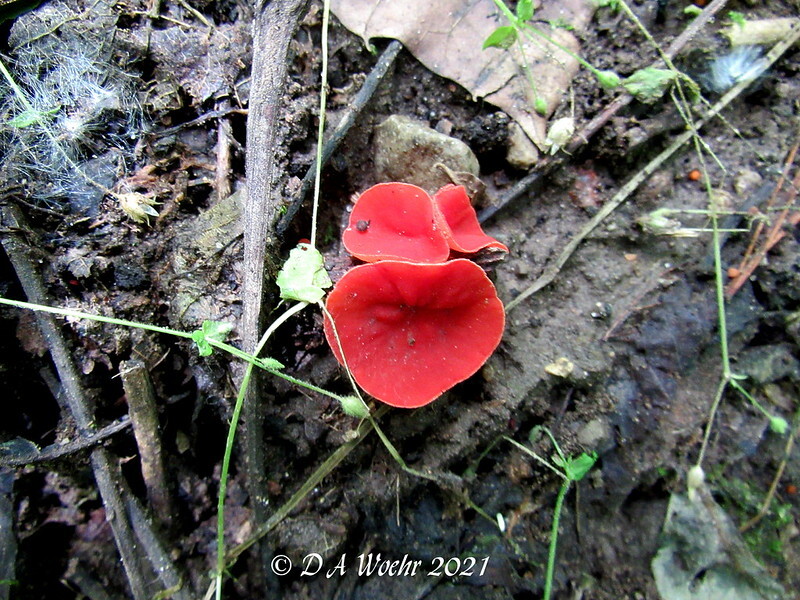 Sarcoscypha coccinea, commonly known as the scarlet elf cup, or the scarlet cup, is a species of fungus in the family Sarcoscyphaceae of the order Pezizales.
Sarcoscypha coccinea, commonly known as the scarlet elf cup, or the scarlet cup, is a species of fungus in the family Sarcoscyphaceae of the order Pezizales.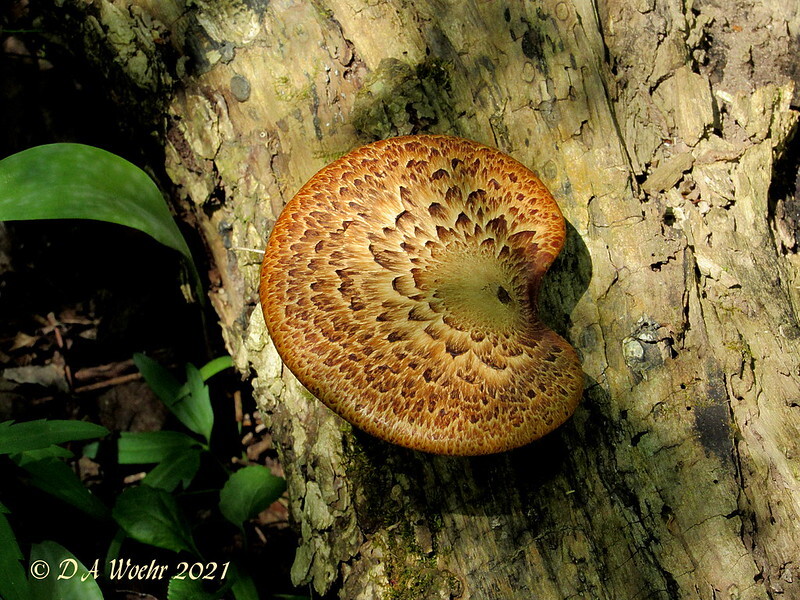 Cerioporus squamosus, synonym Polyporus squamosus, is a basidiomycete bracket fungus, with common names including dryad's saddle and pheasant's back mushroom
Cerioporus squamosus, synonym Polyporus squamosus, is a basidiomycete bracket fungus, with common names including dryad's saddle and pheasant's back mushroom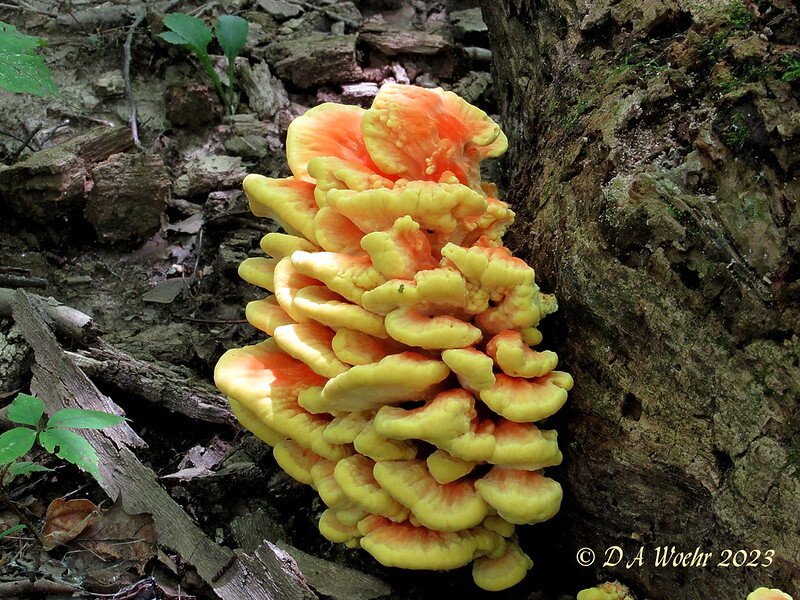 Laetiporus is a genus of edible mushrooms found throughout much of the world. Some species, especially Laetiporus sulphureus, are commonly known as sulphur shelf, chicken of the woods,
Laetiporus is a genus of edible mushrooms found throughout much of the world. Some species, especially Laetiporus sulphureus, are commonly known as sulphur shelf, chicken of the woods,